#ancient Jerusalem
Text
The Superior Moscow, Russia
The Superior Moscow, Russia is a necessary post since it has been so much talk about the Tartarian Empire lately. Tartary is a Country in Asia near Russia, but what if the Americas was home to the original Russia and Tartary? If this is proven correct, it will demonstrate that America is the orient (the East) and the true old world. Please read my previous blog post that proves that the Americas…

View On WordPress
#Abyssinia#ancient Jerusalem#Asia Major#Bethlehem#Black Russian Icons#Civil war#Ethiopia Superior#France#History of Russia#India Superior#Jesus Christ#Jesus was a Moslem#Lake Galilee#Mediterranean Sea#Moscow Florida#Moscow Ohio#Moscow Russia#Muscovee creek#Nineveh#Norimberga#Old Tampa Bay Hotel#Our Lady of Bethlehem#Pahokee Florida#Russia Ohio#Saint Andrews#Saint Petersburg#Saracens#Tameri#Virgin Mother Mary#Washitaw moors
4 notes
·
View notes
Text
Palestinians and Sinai

This is the report



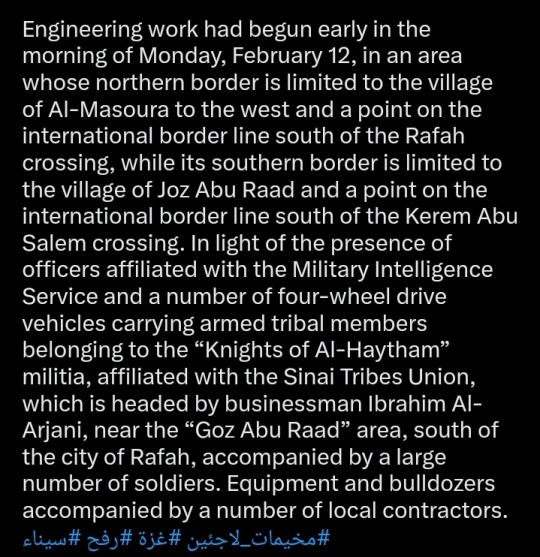
I'm holding out hope that Sisi and the generals keeping him in power aren't stupid enough to do this because it will destabilise Egypt
#yemen#jerusalem#tel aviv#current events#palestine#free palestine#gaza#free gaza#news on gaza#palestine news#news update#war news#war on gaza#ancient egypt#rafah#rafah crossing#genocide#gaza genocide
597 notes
·
View notes
Text
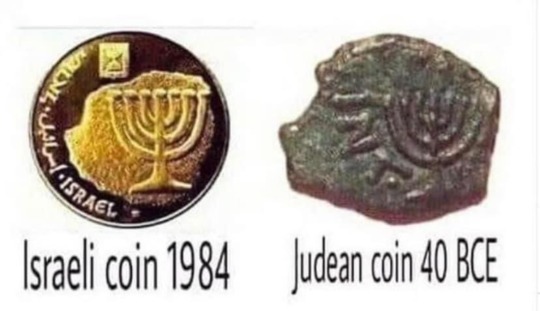
Jews are indigenous to Judea (and Palestine). Not Arabs. Not Muslims.
#israel#secular-jew#jewish#judaism#israeli#jerusalem#diaspora#secular jew#secularjew#islam#judea#judea and samaria#Samaria#coinage#ancient coins#Judean#indigenous#indigeneity
273 notes
·
View notes
Text

I found this map of ancient Egypt and the surrounding nations in my textbook today. And there, in the very heart, under Syria, is Palestine.
Not Israel, Palestine.
It hurts my soul that there are indigenous families you could have owned and carried for their land for thousands of years that are being pushed out, while the West's leaders stay silent. Colonisers supporting colonisers.
#free free palestine#free free gaza#palestine will never die#gaza#free gaza#jerusalem#free palestine#tel aviv#current events#gaza genocide#palestine#genocide#palestine news#ancient history#ancient palestine#israel is a war criminal#indigenous
93 notes
·
View notes
Text
2,300-Year-Old Gold Ring Found in City of David
Israel Antiquities Authority says ‘emotionally moving find’ likely belonged to a boy or girl.
Archaeologists have discovered a 2,300-year-old ancient gold ring set with a precious stone in the City of David Jerusalem, which was reportedly made for and worn by a young child who resided there during the Hellenistic period.
The excavations were carried out jointly between the Israel Antiquities Authority (IAA) and Tel Aviv University (TAU) as part of the Jerusalem Walls National Park project, with the support of the Elad Foundation.
“It is an unusual and deeply moving find; not one that we discover every day,” the archaeological team told the Jerusalem Post. The red precious stone was apparently a garnet, and the gold is a refined material that was very well-preserved. Since its last use over two millennia ago, the ring hasn’t accumulated rust or weathering.
The gold ring was recently uncovered by Tehiya Gangate, a City of David archaeologist and member of the excavation team. She was sifting earth through a screen when something glittery caught her eye,

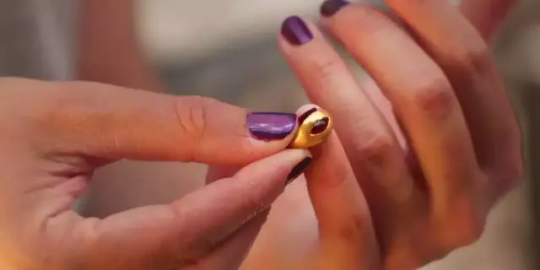

“I immediately yelled, ‘I found a ring, I found a ring!’ Within seconds, everyone gathered around me, and there was great excitement. This is an emotionally moving find. I always wanted to find gold jewelry, and I am very happy this dream came true – literally a week before I went on maternity leave,” she told the Jerusalem Post.
“The ring is very small. It might fit a woman’s pinkie or a young girl’s or boy’s finger,” IAA excavation directors Dr Yiftah Shalev and Riki Zalut Har-tov said.
Dr Marion Zindel added that the ring was made by hammering thin pre-cut gold leaves on a metal ring base. Aesthetically, it is characteristic of the common fashion of the Persian and early Hellenistic periods, dating from the late fourth to early third century BC and onwards. During that era, people started to have a preference for gold with set stones rather than decorated gold.
By Matthew Norman.
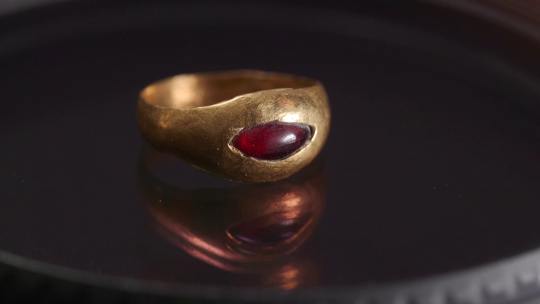
#2300-Year-Old Gold Ring Found in City of David#City of David#Jerusalem#israel#Hellenistic period#gold#gold jewelry#ancient artifacts#archeology#archeolgst#history#history news#ancient history#ancient culture#ancient civilizations#ancient israel#israeli history#ancient art#ancient jewelry
23 notes
·
View notes
Text




Boran dokht [590 - 632 A.D]
Boran dokht was the first empress of the sassanid (persia) empire. She was the daughter of king khosrow II and byzantine princess Maria.
Although her two tenures of rule were shortlived, she did try to bring stability to persia by the implementation of just laws, reconstruction of the infrastructure, and by lowering taxes and minting coins. Diplomatically, she desired good relations with her western neighbours (the byzantinnes) , whom she had an embassy sent to, which was well received by emperor heraclius
A/n: idk why but it kinda reminds me of sibylla's ceremonial crown >_<...
Art by me
Coin source: sekeha . Com
#sassanid empire#digital artist#artwork#artists on tumblr#ancient#ancient history#ancient persia#boran dokht#kingdom of heaven#fandom#fanart#history#empress#baldwin iv#sibylla of jerusalem#art#sassanian empire#women in history
49 notes
·
View notes
Text

Bar Kokhba silver Zuz/denarius. Obverse: trumpets surrounded by "To the freedom of Jerusalem". Reverse: A lyre surrounded by "Year two to the freedom of Israel."
17 notes
·
View notes
Text
Nestled in the mystical Kidron Valley, Jerusalem, the Tomb of Absalom is steeped in myth and folklore. Traditionally linked to the Old Testament's Absalom, the third son of King David, the funerary monument nevertheless warrants a closer examination to unveil its true origins. A detailed examination of its design reveals that the monument itself is nowhere near that old. So, to whom does the funerary monument truly belong, and when was it actually built?
23 notes
·
View notes
Text









The Old City of Jerusalem // יְרוּשָׁלַיִם // القُدس
(through my lens)
Dome of the Rock
Walking through shadows
Al-Aqsa Mosque snippet
The Wall
Erlöserkirche from below
Alleys and valleys
Lushness
Sweet time
Sweet time ii
8 notes
·
View notes
Text



DNA bursting from the forehead of Akhenaten symbolizes our spine,
the same spine that tempted Mary and Adam in the Garden of Gethsemane.
10 notes
·
View notes
Text
instagram
Happy Jerusalem Day!
יום ירושלים שמח
🤍💙
5 notes
·
View notes
Text
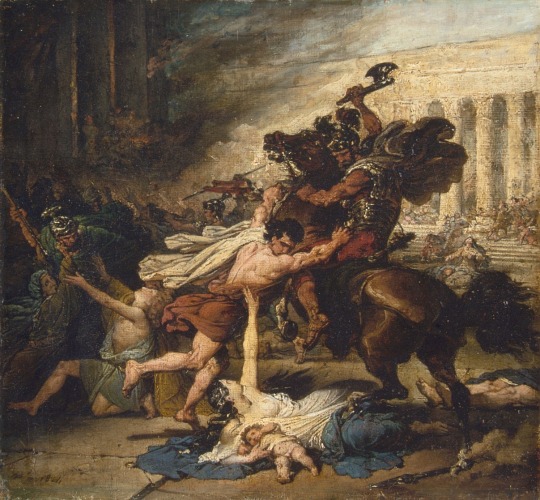
The Sack of Jerusalem by the Romans
by François Joseph Heim
#françois joseph heim#art#sack#jerusalem#romans#roman#history#middle east#antiquity#ancient roman#ancient rome
118 notes
·
View notes
Text

What did Jerusalem’s main road look like about 1,500 years ago?
An archaeological excavation conducted by the Israel Antiquities Authority in 2010 near the Old City’s Jaffa Gate brought to life a 1,500 year-old map.
The Madaba Map is an ancient mosaic map that paves the floor of Saint George’s Church in the city of Madaba, Jordan.
The map, created in 6th-7th centuries CE, depicts the Land of Israel during the Byzantine period.
It clearly shows the entrance into Jerusalem from the west via a central single gate that led to the main street of the city.
In the past, the reliability of the map, which, among other buildings, provides the earliest visual description of the Church of the Holy Sepulchre, has been questioned.
The excavation, located near David Street known to tourists as the terraced shopping street exposed for the first time, archaeological evidence of Jerusalem’s central street from about 1,500 years ago.
The salvage excavation, carried out in the wake of infrastructure works undertaken in the area and funded by the Jerusalem Development Authority, gave the archaeologists and the public a rare glimpse into archaeological remains underlying the asphalt and the paving stones.
Familiar with the Madaba Map, Dr. Ofer Sion, Director of the Excavation on behalf of the Israel Antiquities Authority, suspected that the ancient main street underlay the modern road.
"After removing a several archaeological layers, about 4.5m below modern street level, we were excited to discover the large stone slabs, each about one meter long, that were part of the ancient street.
It’s great to see that today’s bustling David Street preserves the route of the Byzantine-period busy street from 1,500 years ago.”
The Madaba Map, whose extant part measures 16x5m, depicts the land of Israel as known to the mosaic artist.
Map encompasses the entire country, with emphasis on Jerusalem and its Christian sites.
It shows that many churches were first constructed in Jerusalem during this period, when city underwent a religious transformation from a pagan to a Christian city.
The churches can be identified by their red tiled roofs illustrated on the map.
© Israel Antiquities Authority
#Madaba Map#Jerusalem#Israel Antiquities Authority#Old City#Jaffa Gate#archaeological excavation#archaeology#ancient mosaic map#mosaic map#Israel#Byzantine period#Saint George’s Church#Church of the Holy Sepulchre#Jerusalem Development Authority#ancient main street#streets#churches#maps#6th century#7th century
7 notes
·
View notes
Text

A Tale of Two Coins - 2000 years apart!
On the right is a Judea Capta coin from 71 AD, 1952 years ago. The coin says “Judea conquered" in latin. These were commemorative coins originally issued by the Roman Emperor Vespasian to commemorate the capture of Judea and the destruction of the Jewish Second Temple by his son Titus in 70 CE during the First Jewish Revolt. On one side of the palm tree is a weeping defeated Jewish woman. On the other a victorious Roman soldier.
On the left, we see the same palm tree representing the Jewish homeland, but instead of a Roman soldier, there is a Jewish woman holding a baby up to the heavens symbolizing the rebirth of the Jewish people like a phoenix out of the ashes. In place of the weeping woman is a Jewish farmer (her husband) planting new roots for the Jewish people in the Jewish homeland. Instead of “Judea Capta'' the words read - “Israel Liberated 1948″.
These two coins sum up the history of exile and return of the indigenous Jews to the Kingdom of Israel.
In the prophetic words of the Bible: “They who sow in tears shall reap in joy.” (Psalm 126)
#secular-jew#israel#jewish#judaism#israeli#jerusalem#diaspora#secular jew#secularjew#islam#coins#ancient coins#judean coinage#judea#samaria#romans#judea capta#vespasian#titus#emperor#roman empire#Israel liberated#1948#hamas#coinage#second temple#1st century#palestine#Palestinian#gaza
380 notes
·
View notes
Text

The old city of Jerusalem. July, 2013.
My thoughts and prayers are with my people there in this awful time.
#israel#jerusalem#travel#city#old city#urban#middle east#holy city#ancient#rooftops#cityscape#summer#yzshot#nikon#nikon d3000
14 notes
·
View notes
Text
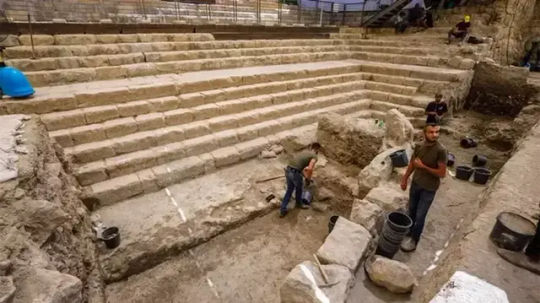
Biblical Steps Where Jesus 'Healed a Blind Man' Unearthed by Archaeologists
In Jerusalem, a recent excavation effort uncovered stairs that had been hidden for more than 2,000 years near the spot where the New Testament says Jesus treated a blind man.
A new excavation project in Jerusalem has unearthed steps unseen in over 2,000 years at a place where the New Testament records Jesus as having healed a blind man.
The Israel Antiquities Authority, the Israel National Parks Authority and the City of David Foundation early this year announced that the Pool of Siloam, a biblical site cherished by Christians and Jews, will be open to the public for the first time in 2,000 years in the near future.
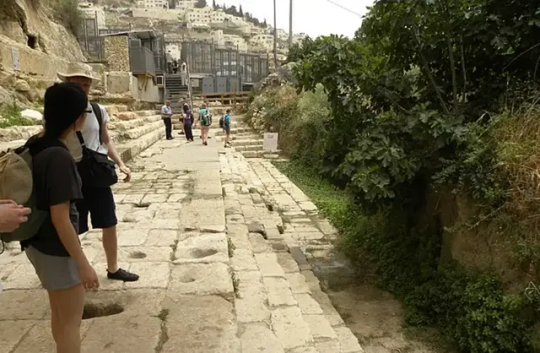
In recent weeks, archeologists achieved significant progress in the excavation, unearthing some eight steps descending into the Pool which had not been seen in 2,000 years — around the time when Jesus walked the Earth.
“The ongoing excavations within the City of David — the historic site of Biblical Jerusalem — particularly of the Pool of Siloam and the Pilgrimage Road, serve as one of the greatest affirmations of that heritage and the millennia-old bond Jews and Christians have with Jerusalem,” Ze’ev Orenstein, director of International Affairs – City of David Foundation said.
“Not simply as a matter of faith, but as a matter of fact,” he added.
The City of David Foundation is a non-profit organization established in 1986, “dedicated to the preservation and development of the City of David and its environs, and is committed to connecting people of all faiths and backgrounds to ancient Jerusalem.”

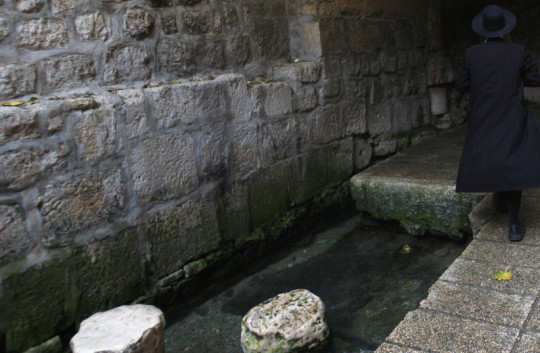

“The half-mile running through the City of David, from the Pool of Siloam in the south, continuing along the Pilgrimage Road, up to the footsteps of the Western Wall, Southern Steps and Temple Mount, represents the most significant half-mile on the planet,” Orenstein said.
“There is no half-mile anywhere on Earth which means more to more people – not to millions, but to billions — than the half-mile that is the City of David,” he added.
The pool was first built roughly 2,700 years ago as part of Jerusalem’s water system in the eighth century B.C.
The construction unfolded during the reign of King Hezekia as cited in the Bible in the Book of Kings II, 20:20, according to the two Israeli agencies and the City of David Foundation.
According to estimates, the Pool of Siloam passed through many stages of construction and reached the size of 1.25 acres.
According to a passage in the Gospel of John, Jesus restored the sight of a man born blind at the Pool of Siloam.
A small section of the pool, which has been fully excavated, has been accessible to the public for several years.
The vast majority of the pool is being excavated and will either be opened piecemeal or once the entire site is unearthed.
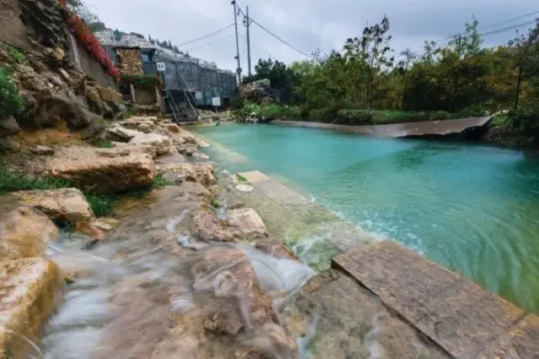
Rev. Johnnie Moore, president of the Congress of Christian Leaders, told Fox News Digital in January that, “In the Pool of Siloam, we find evidence of history preserved for us, revealed at just the right time.”
“Theologically, it affirms Scripture, geographically it affirms scripture, and politically it affirms Israel’s unquestionable and unrivaled link to Jerusalem. Some discoveries are theoretical. This one is an undeniable. It is proof of the story of the Bible and of its people, Israel,” he said.
A stroke of luck revealed the pool in 2004, when infrastructure work carried out by the Hagihon water company uncovered some of the pool’s steps.
The Israel Antiquities Authority, under supervision of professors Roni Reich and Eli Shukron, launched a survey.
As a result, the northern perimeter, as well as a small section of the eastern perimeter of the Pool of Siloam, were uncovered.
“Whether in the halls of the United Nations, ongoing efforts by Palestinian leadership, or on university campuses, Jerusalem’s Biblical heritage is under assault,” said Orenstein.
Orenstein noted that in few years time, visitors to the City of David will be able to witness the factual history for themselves and “see with their own eyes, touch with their own hands, and walk with their own feet upon the very stones their ancestors walked thousands of years ago, as they made their way to Jerusalem on pilgrimage.”
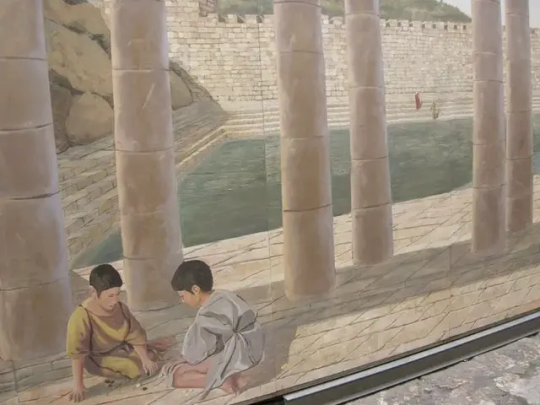

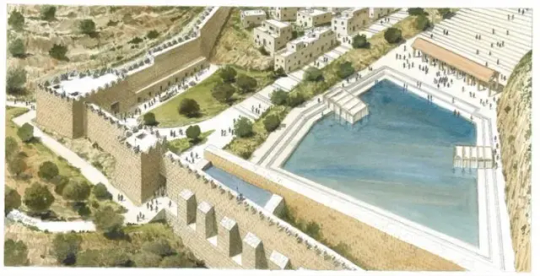
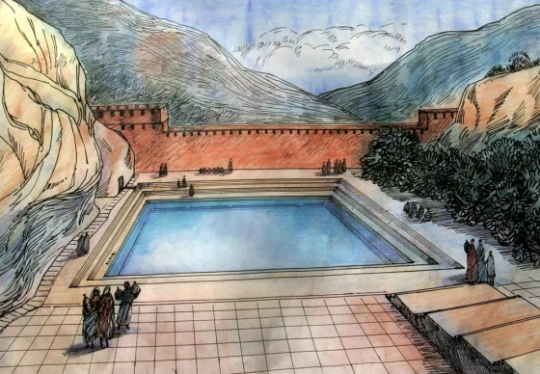
#Biblical Steps Where Jesus 'Healed a Blind Man' Unearthed by Archaeologists#Jerusalem#Israel#City of David#Pool of Siloam#Pilgrimage Road#King Hezekia#Jesus#Jesus Christ#ancient artifacts#archeology#archeolgst#history#history news#ancient history#ancient culture#ancient civilizations#ancient israel
130 notes
·
View notes